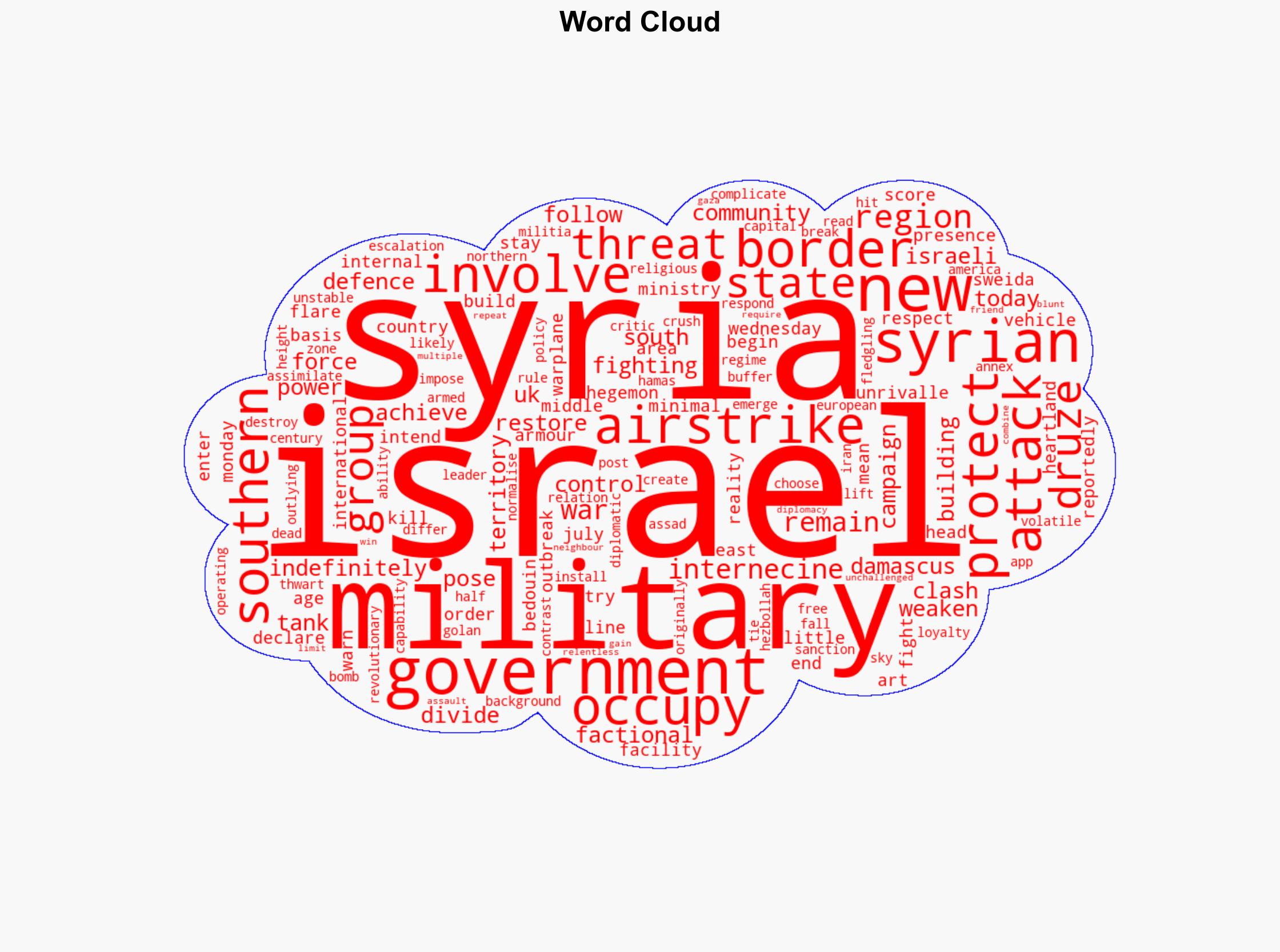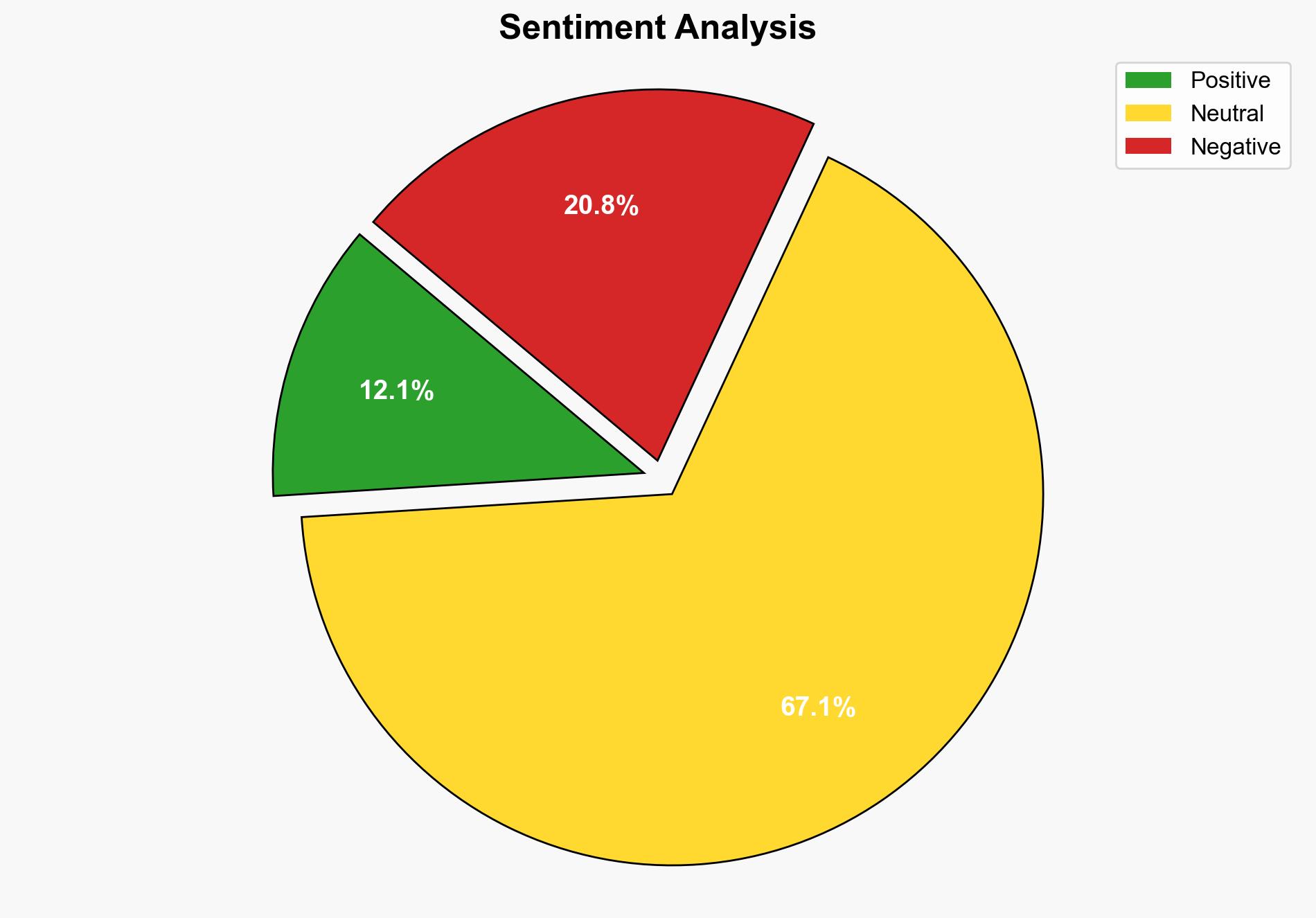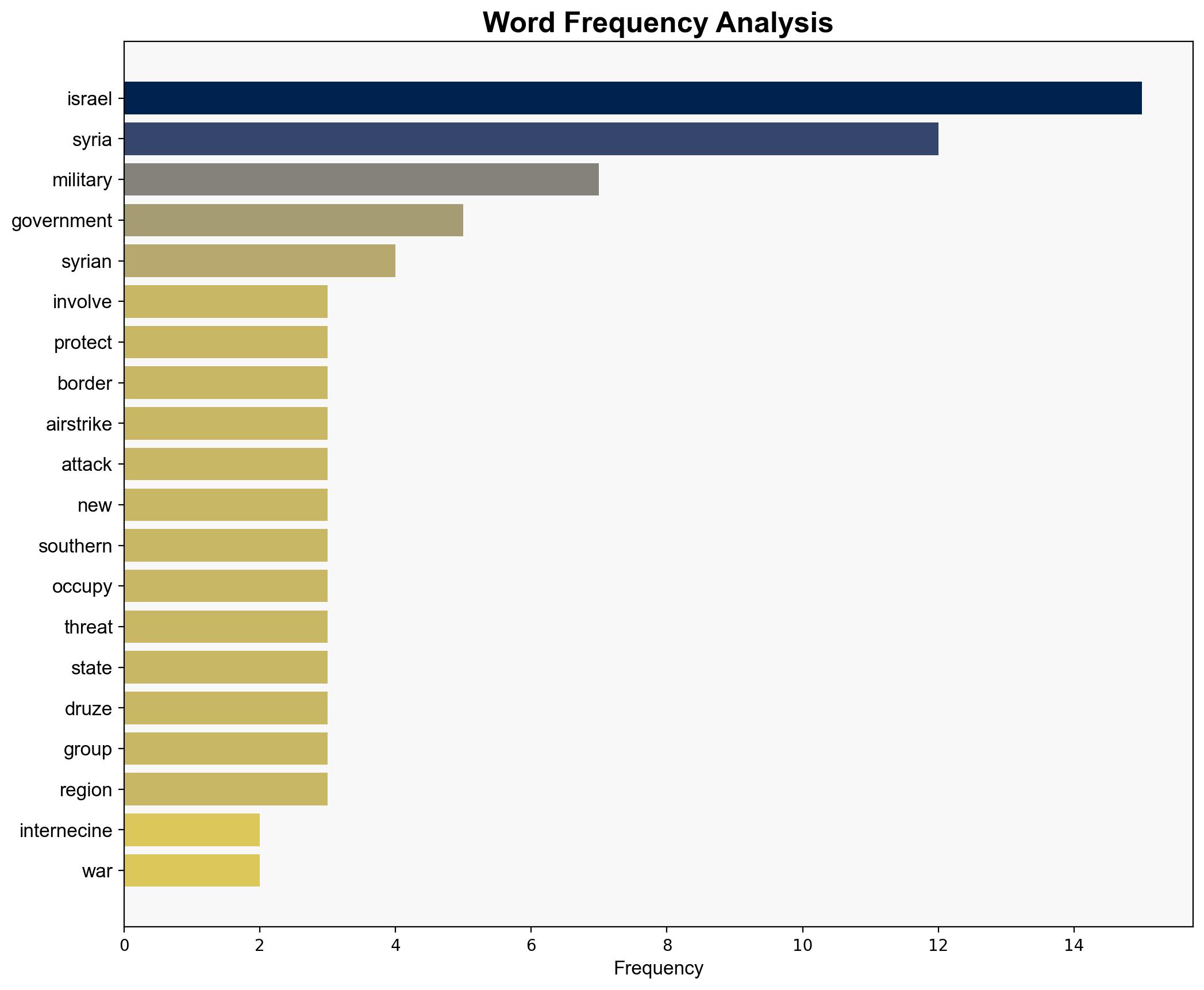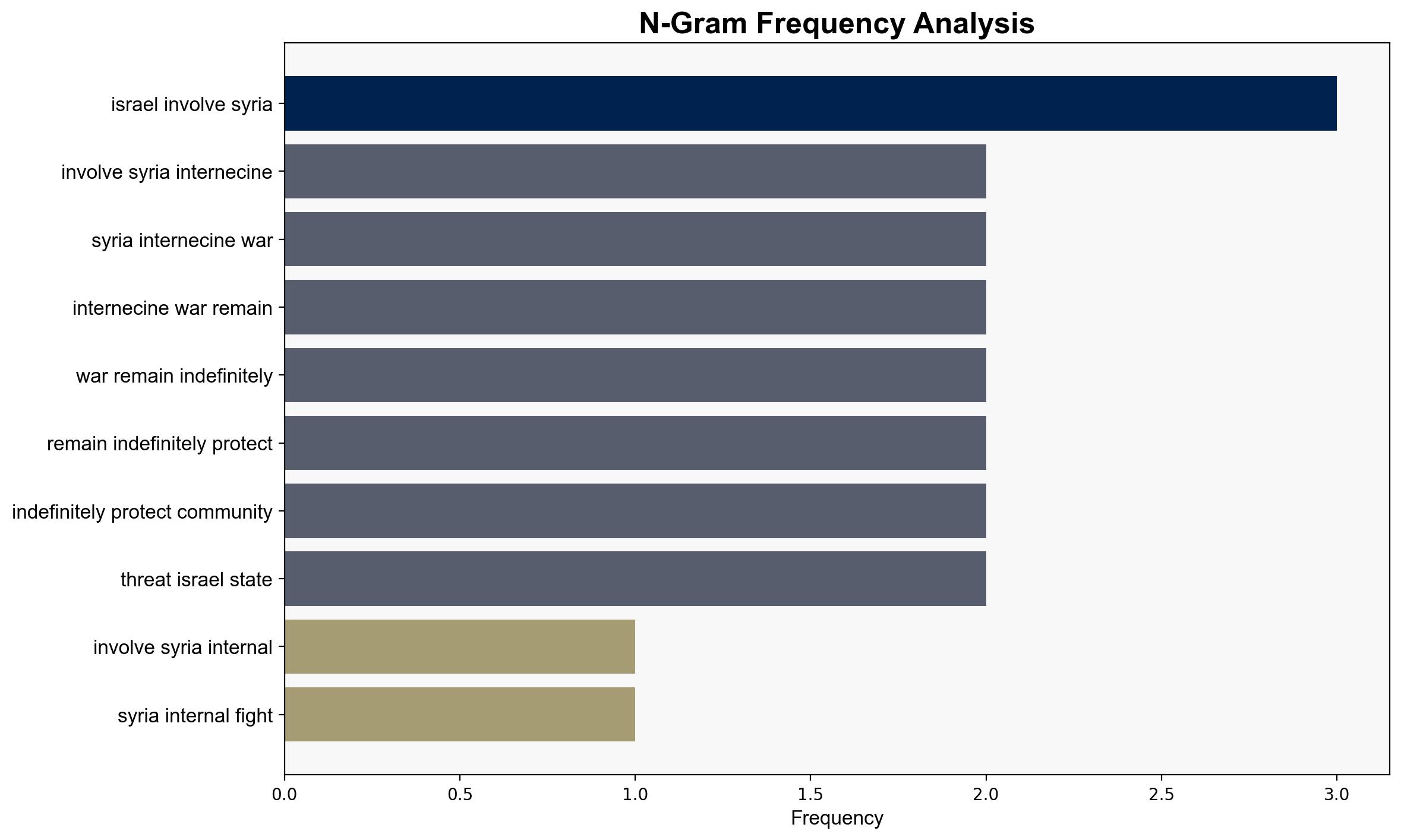Why Israel is getting involved in Syria’s internal fighting – Sky.com
Published on: 2025-07-16
Intelligence Report: Why Israel is getting involved in Syria’s internal fighting – Sky.com
1. BLUF (Bottom Line Up Front)
Israel’s involvement in Syria’s internal conflict is driven by strategic objectives to maintain regional security and protect its borders. The primary aim is to prevent hostile entities from gaining a foothold near Israeli territory, particularly in the Golan Heights. This report identifies the need for a balanced approach that combines military actions with diplomatic efforts to ensure long-term stability.
2. Detailed Analysis
The following structured analytic techniques have been applied to ensure methodological consistency:
Causal Layered Analysis (CLA)
– **Surface Events**: Israeli airstrikes on Syrian military facilities and government buildings in Damascus.
– **Systemic Structures**: The ongoing power vacuum and factional fighting in southern Syria, particularly in the Sweida region.
– **Worldviews**: Israel’s perception of threats from Iranian-backed groups and the need to maintain military superiority.
– **Myths**: The belief in the necessity of a buffer zone to ensure national security.
Cross-Impact Simulation
– Potential destabilization of the region could lead to increased refugee flows and economic strain on neighboring countries.
– Escalation of military actions may provoke responses from Iran and affiliated groups, impacting regional alliances.
Scenario Generation
– **Best Case**: Stabilization of southern Syria with reduced influence from hostile groups, leading to normalized relations.
– **Worst Case**: Escalation into a broader regional conflict involving multiple state and non-state actors.
– **Most Likely**: Continued low-intensity conflict with intermittent Israeli military interventions.
3. Implications and Strategic Risks
– **Political**: Potential strain on Israel’s diplomatic relations with countries normalizing ties with Syria.
– **Military**: Risk of overextension of Israeli military resources and unintended escalation.
– **Economic**: Impact on regional trade routes and economic stability due to ongoing conflict.
4. Recommendations and Outlook
- Enhance intelligence-sharing with allies to monitor developments and preempt threats.
- Engage in diplomatic efforts to support a political resolution in Syria, reducing the need for military interventions.
- Scenario-based projections suggest maintaining a flexible military posture while pursuing diplomatic channels to mitigate risks.
5. Key Individuals and Entities
– No specific individuals are mentioned in the source text. Focus remains on state actors and military entities.
6. Thematic Tags
national security threats, regional stability, military strategy, Middle East geopolitics





